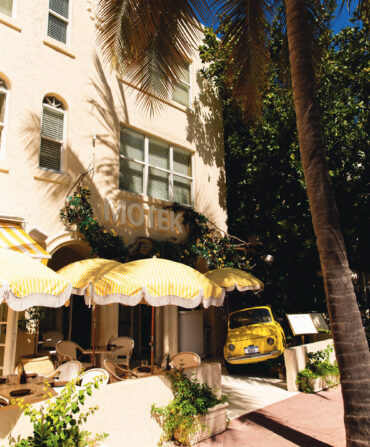Food & Drink
The Year in Southern Restaurants
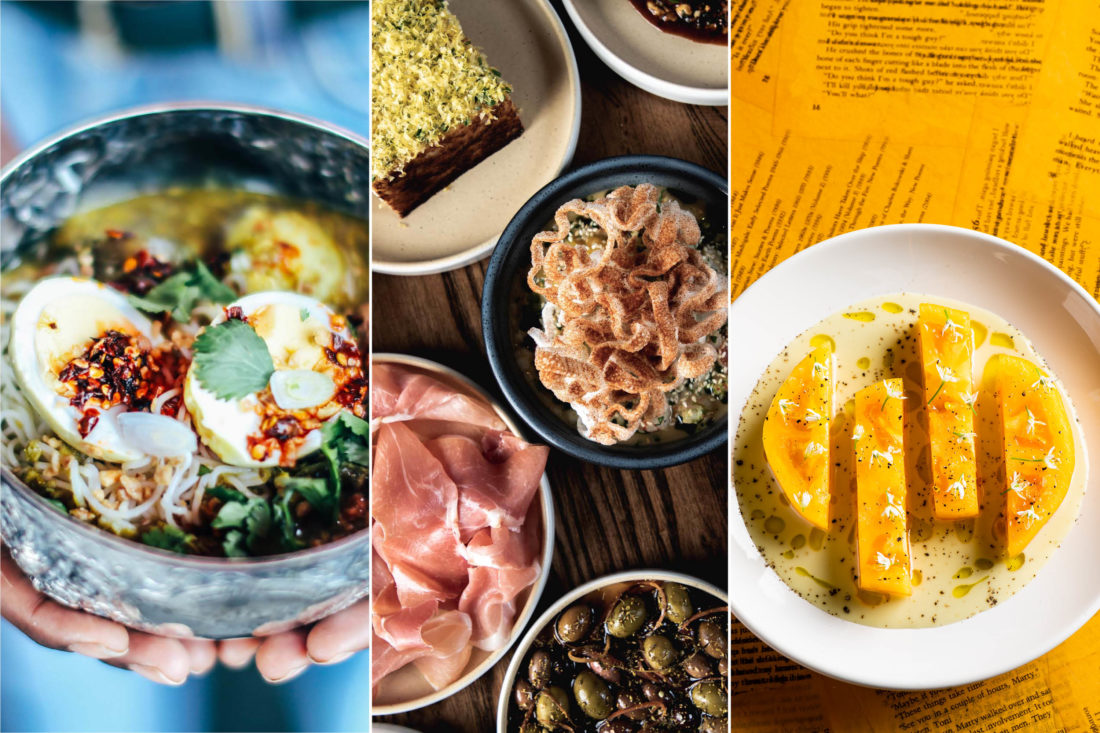
A whole new kind of farm-to-table restaurant in Upstate South Carolina. Inventive bar food on Kentucky’s Bourbon Trail. Two very different tasting menu restaurants in two of the new capitals of the South—Atlanta and Nashville. And a mother-and-daughter team bringing exciting new flavors to the nation’s capital. Though each of these five restaurants, presented here in alphabetical order, have markedly different styles, they share one important thing in common: a unique take on Southern hospitality.
The Bar at Willett
Bardstown, Kentucky
Opened September 2019
thebaratwillett.com
So, pray tell, when was the last time you got excited about an egg salad sandwich? Forever? Then you’ve got a treat waiting at Willett Distillery.

Photo: Courtesy of the Bar at Willett
Sunrise at Willett Distillery.
When chef John Sleasman arrived at this family-owned estate bourbon producer to help open its bar and restaurant, he thought about what he’d like to eat with a great craft cocktail or a shot of vintage single barrel whiskey and decided it would be the Platonic ideal of an egg salad sandwich. After dozens of experiments, he settled on a recipe that involves, he says with a rueful laugh, “the most steps possible.” It starts with toasted brioche, factors in an egg yolk jam, and finishes with a flurry of cured egg yolk shavings. In a surprise to no one who lives in the South, he opted for Duke’s mayonnaise over homemade, but treats it to a light smoke first.
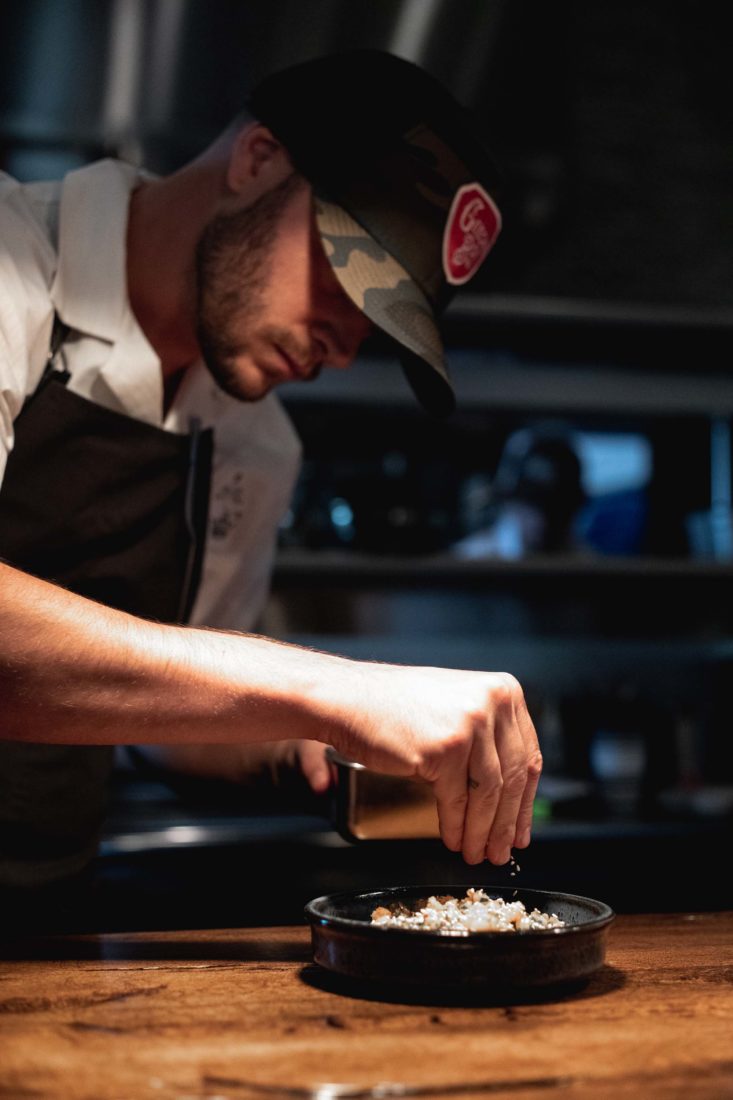
Photo: Courtesy of the Bar at Willett
Chef John Sleasman.
Making elevated bar snacks in a restaurant upstairs from the gift shop where tourists start their Kentucky Bourbon Trail tours is, well, a new bag for Sleasman. Previously he ran the tasting-room menu at McCrady’s in Charleston, South Carolina, serving course after course of elaborate high-concept bites to a dozen high-spending diners gathered around a counter. After leaving McCrady’s, a job that required him to go nonstop from 9 a.m. through service each day, he spent a few months in Montana before connecting with the Kulsveen family who run Willett.
Sleasman was immediately impressed by the spirit of the place. “The hospitality around here felt so right,” he says. “Right from the start, I felt like a friend of the family.” Drew Kulsveen, the master distiller, and his sister Britt, who oversees operations, convinced Sleasman to move to Bardstown early and help build the bar from the ground up. Working with bar manager Andy Pope, he helped develop a friendly, bar-focused food and drink menu—one without beverage pairings, callouts to trendy restaurant food, or convoluted cocktailery. Pope may use liquid nitrogen to chill his glassware and large-format ice in his shakers, but it’s all in service to serving the best-ever Manhattans, Old Fashioneds, and other classic whiskey drinks. There’s also an extensive collection of rare and vintage liquors and family-estate bottles not available elsewhere.
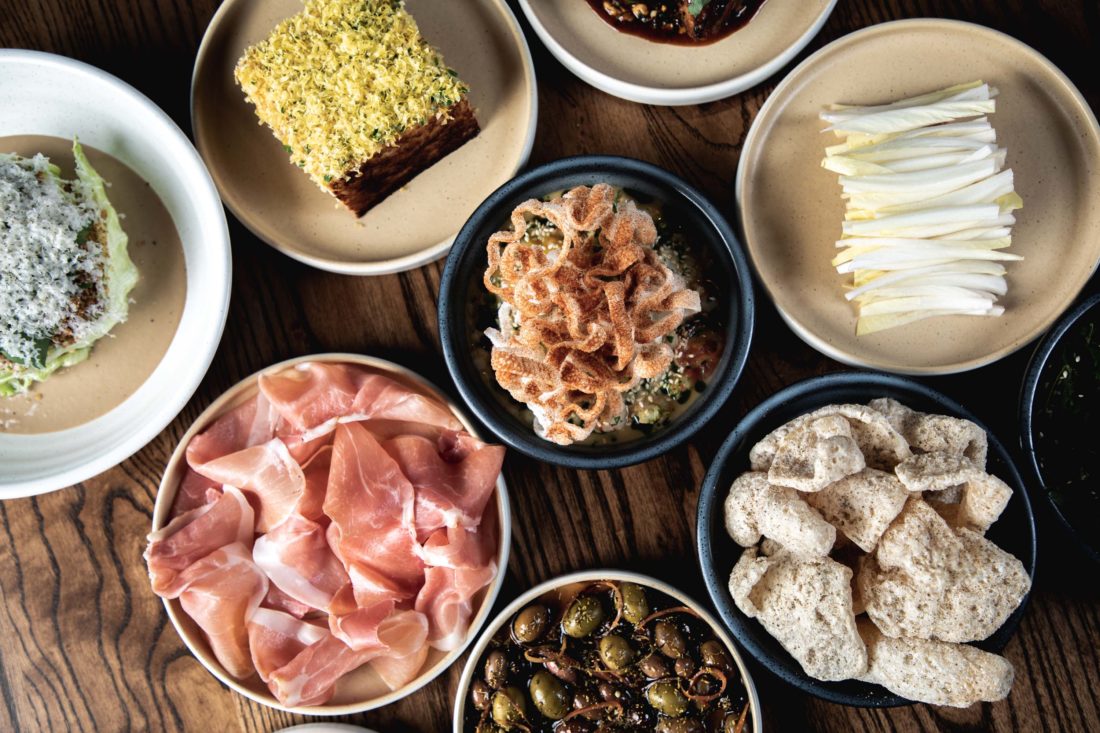
Photo: Courtesy of the Bar at Willett
A selection of Sleasman’s bar snacks, including his egg salad sandwich.
When asked to describe his food, Sleasman jokes, “I don’t want to call it lowbrow, but…” He may serve braised butterbeans and kohlrabi or fried catfish fingers. He’ll throw in a sneaky flourish here and there—those catfish fingers come with chartreuse pickles—but all the dishes have a deliberate regular-people vibe. He’s working with local farmers and trying, he says, “to put forward the farm to table vibe” to keep them from going straight to Louisville with their product. While he does sometimes miss the intensity of McCrady’s, he loves thinking about what people who come to tour a distillery in Bardstown, Kentucky, want to eat and drink. How do you make it as spectacular as it can be? What is real hospitality all about?
Lazy Betty
Atlanta, Georgia
Opened February 2019
lazybettyatl.com
When Ron Hsu was in elementary school in an Atlanta suburb, his mother, Betty, cut a deal with the principal: If the bus driver could bring Ron to her Chinese restaurant, Hunan Village, after school, she’d prepare a feast for the entire student body once a year. When he was old enough to be trusted with a knife and reliable enough to finish his homework, she’d set him up on a chair in front a fifty-pound bag of onions (bigger than he was) and pay him $2 to peel the whole thing. If he was fast, he got a second bag. When he was in middle school, he began washing dishes, by high school he had graduated to the fry station. He grew up in Hunan Village and remembers nothing so fondly as those late weekend night dinners with his parents and siblings at the local Waffle House after closing. Betty loved the steak and eggs.
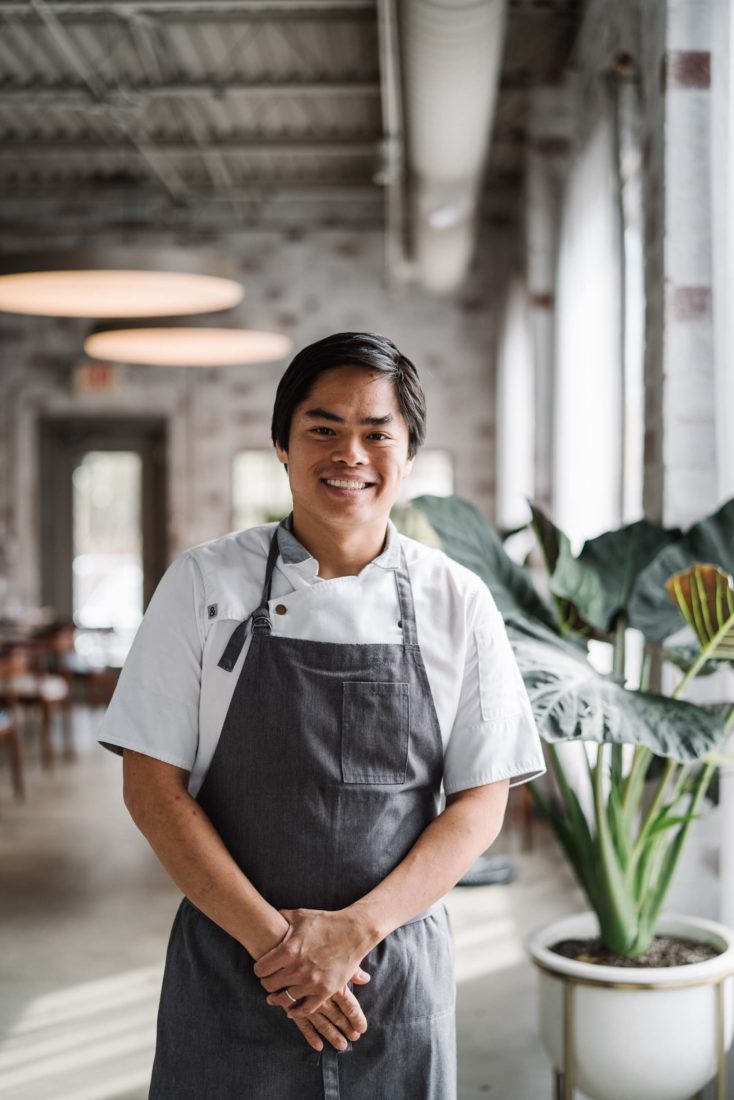
Photo: Courtesy of Andrew Thomas Lee
Chef Ron Hsu.
Once a restaurant kid, always a restaurant kid. Despite a halfhearted attempt to study business at the University of Georgia, Ron got his mom’s blessing to trade it in for culinary school and world travel—a journey that culminated with ten years at New York’s famed Le Bernardin. Still, a parent worries. “My mom told me she was always the most worried about me of all her kids,” Hsu recalls. “When is Ronald going to stop being someone else’s employee and open his own business?” he continues, gently mimicking her voice.
And so he made his plan to come home, convincing both his wife, Jackie, and work colleague, Aaron Phillips, to make the move south. Lazy Betty—a poke at the mother who was anything but—opened in a casual but artful space with a choice of two intricate tasting menus. The atmosphere says come as you are, then the meal delights with a series of playful but masterly edible tableaux. Hsu and Phillips might treat you to a “Georgia mountain” with a layer of black truffle hiding between a diorama of locally grown Parisian carrots and mushrooms and a hillock of rich potato puree infused with red wine that’s meant to mimic Georgia red clay. “Because my family has such a strong community following, people were very accepting and willing to take a leap of faith when they didn’t recognize the ingredients.”
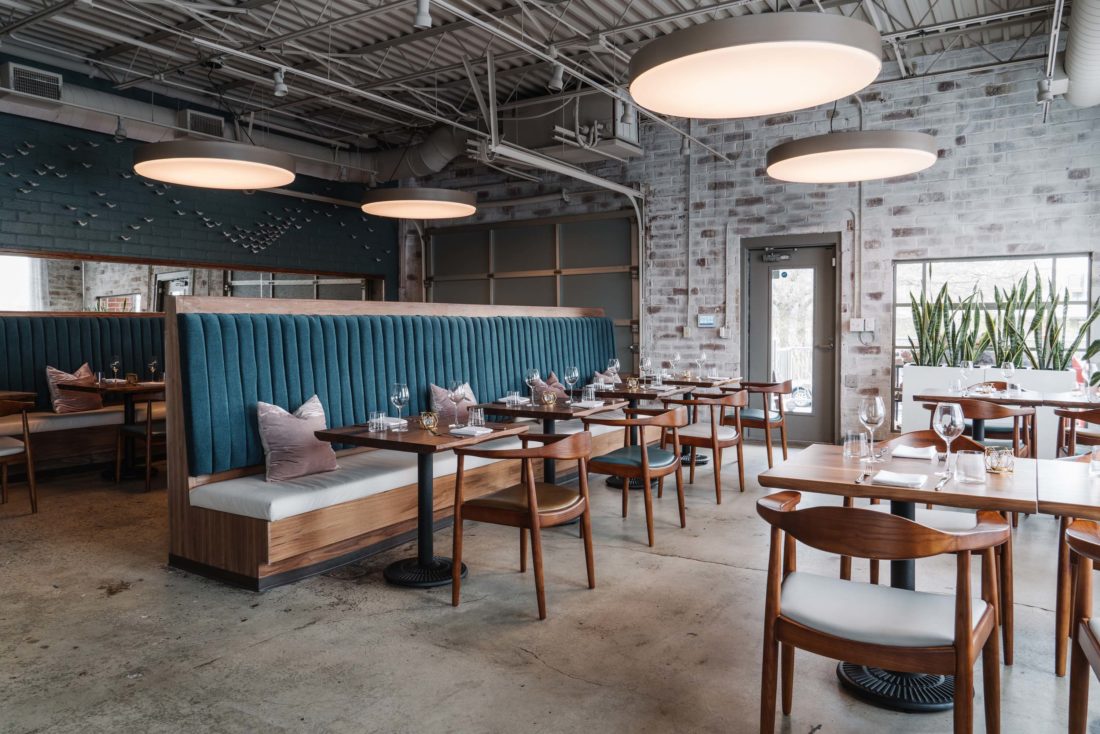
Photo: Courtesy of Andrew Thomas Lee
The dining room of Lazy Betty.
Another dish pairs tiles of Wagyu beef with a sous-vide egg yolk wrapped in a collard leaf, the whole gently napped with beef-fat ponzu. It is a callback to his mom’s favorite treat at Waffle House, a son’s love wrapped in a joke. Betty did get to try the dish and see this son settled with his own business before a cancer diagnosed only two weeks earlier took her life.
Oak Hill Cafe & Farm
Greenville, South Carolina
Opened June 2019
oakhillcafe.com
Restaurants with their own farms can certainly look like old country inns with a stacked-stone chimneys, lace curtains, and a little under-lit sign by a pathway reading “This way to the farm.” But they can also look like the Brady Bunch house.
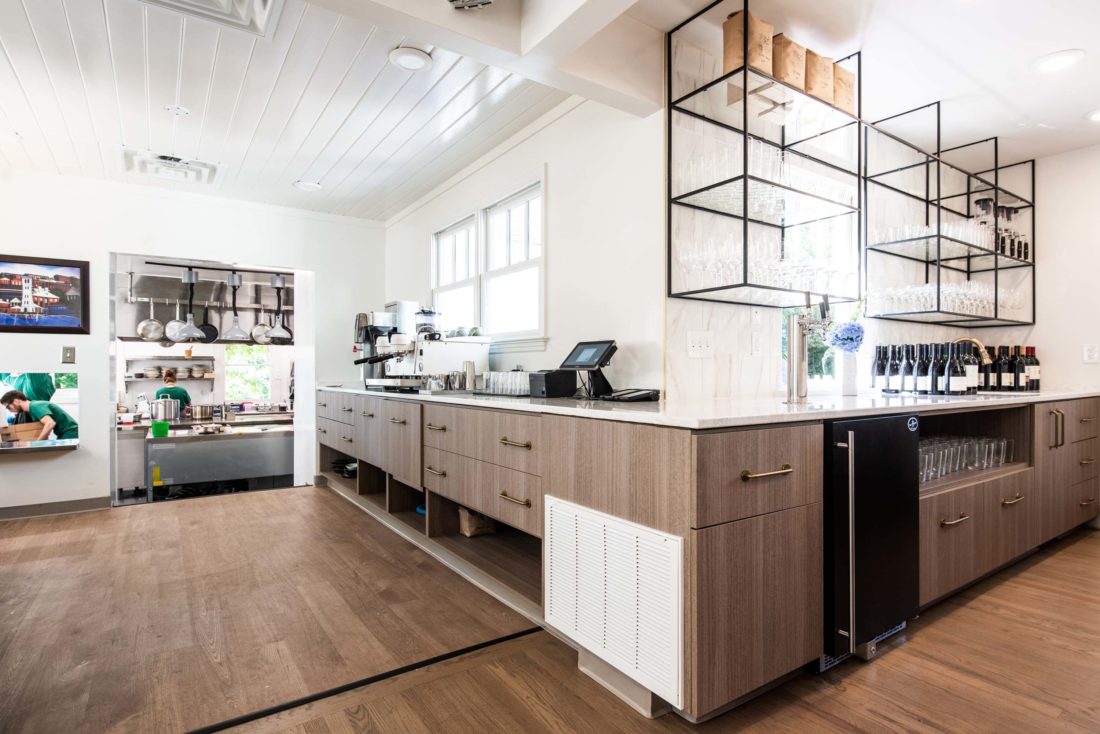
Photo: Courtesy of William Crooks
Oak Hill Café & Farm shows its 1940s ranch house roots.
Lori Nelsen, a lab manager from the environmental sciences department at Greenville’s Furman University, found a 1940’s ranch house on a large, sunny lot. Rather than adding a mother-in-law suite, she partnered up with chef David Porras to open a different kind of restaurant—one that pushes the definition of what farm to table means in the South.

Photo: Courtesy Oak Hill Café & Farm
Chef David Porras and Lori Nelson, lab manager.
Nelsen and Porras planted their crops in the back yard and set up a greenhouse. They turned the two-car garage into a commercial kitchen and enclosed the breezeway that attaches it to the house. They turned the original kitchen into a foyer, the dining room into a bar, and the two downstairs bedrooms (sorry, Alice) into dining rooms. And the upstairs bedrooms?
“The upstairs is for team members,” says Nelsen. “There’s a hangout room for when people need to take a break, a library of cookbooks, and our food lab. There are twenty-four people on our team, and they all rotate, working in front of the house and as farmers. Everyone knows right away what’s happening on the farm. It’s like a cool ecosystem.”
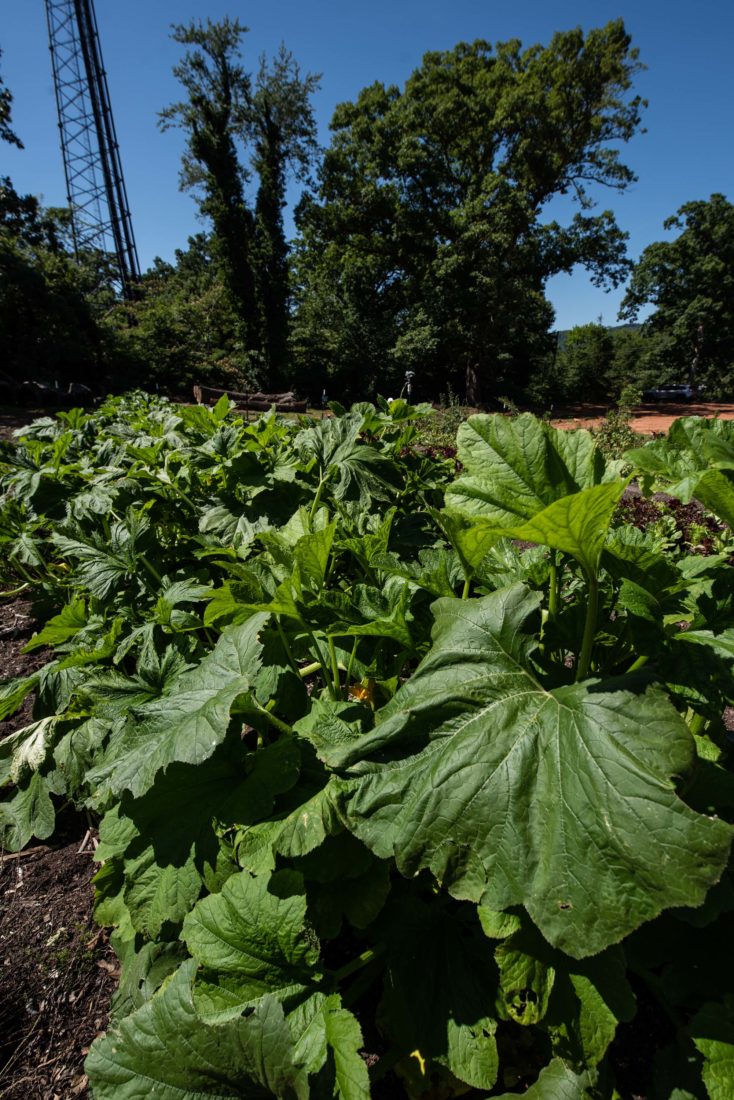
Photo: Courtesy of William Crooks
The garden at Oak Hill Cafe & Farm.
Porras, who ran a restaurant in his native Costa Rica and cooked at the National in Athens, Georgia, serves an à la carte menu most days. He outfits Lowcountry clams with clam emulsion, black garlic, scrambled egg foam, and his own house-made bread for sopping up the fancy goodness. His vegetable-forward menu offers two veggie mains, including a miso-caramelized eggplant with tomato cream jus and buckwheat groats.
Once a month he prepares a tasting menu dinner where he lets the more outré zero-food-waste ideas he cooked up in the food lab out of the bag. “What’s the one thing everyone hates about okra?” he asks. “The slime, right? Well, I made a sorbet of okra slime to serve with okra and a hibiscus mole. I can also dry the leaves and stems and add them to a corn flour base to make tortillas.”
He cooks broccoli stems like marrow bones. He uses cauliflower leaves to flavor oils. He has a million ideas. And an eager team to back him up.
Setsun
Nashville, Tennessee
Opened June 2019
setsuneast.com
Jason Zygmont’s food at the Treehouse in East Nashville was often wonderful, sometimes weird, and occasionally prone to the unlikely flavor combinations and modernist techniques that made diners utter the “P” word. “I didn’t want that pretentious label anymore,” says Zygmont, who left the Treehouse early this year. After looking at some attractive job offers for his next move, he instead settled into this regular weekend popup in a homey neighborhood coffee shop.

Photo: Courtesy of Setsun
Chef Jason Zygmont.
Every Friday through Monday, he and his sous chef, Ray Melendi, prep off-site, arrive at the Blue Sky Cafe bearing bus tubs of food and a cooler full of natural wines, and get to work executing a tight menu of shareable dishes. These dishes are less “I have no idea what I’m eating” and more “Oh, here’s something I know, but with a fun twist.” Spaghetti with cream sauce gets a lashing of green harissa; beef carpaccio finds a happy soulmate in oyster dressing; white sweet potatoes sport a Szechuan aïoli where you’d expect a pat of butter. Zygmont will be the first to say his menu is limited, but that’s not a bad thing.

Photo: Courtesy of Setsun
Yellow Brandywine tomatoes from Zygmont’s summer menu.
“We simplified our cooking mostly out of limitations on time and refrigerator space,” he says. “We can’t be complicated even if we wanted to. We need to strip away as much as we can from each dish, and now I’m cooking different food than I ever have in my career. The limitations have bred creativity.” During the height of the summer tomato season he topped a slice of warm, buttery garlic toast with an inch-thick slab of almost-overripe Cherokee Purple flesh, and doused the whole business in a green tomato aïoli. Rich and tangy, warm and cool, familiar and also a new thrill, it’s the kind of dish that makes diners run their fingers through the sauce.
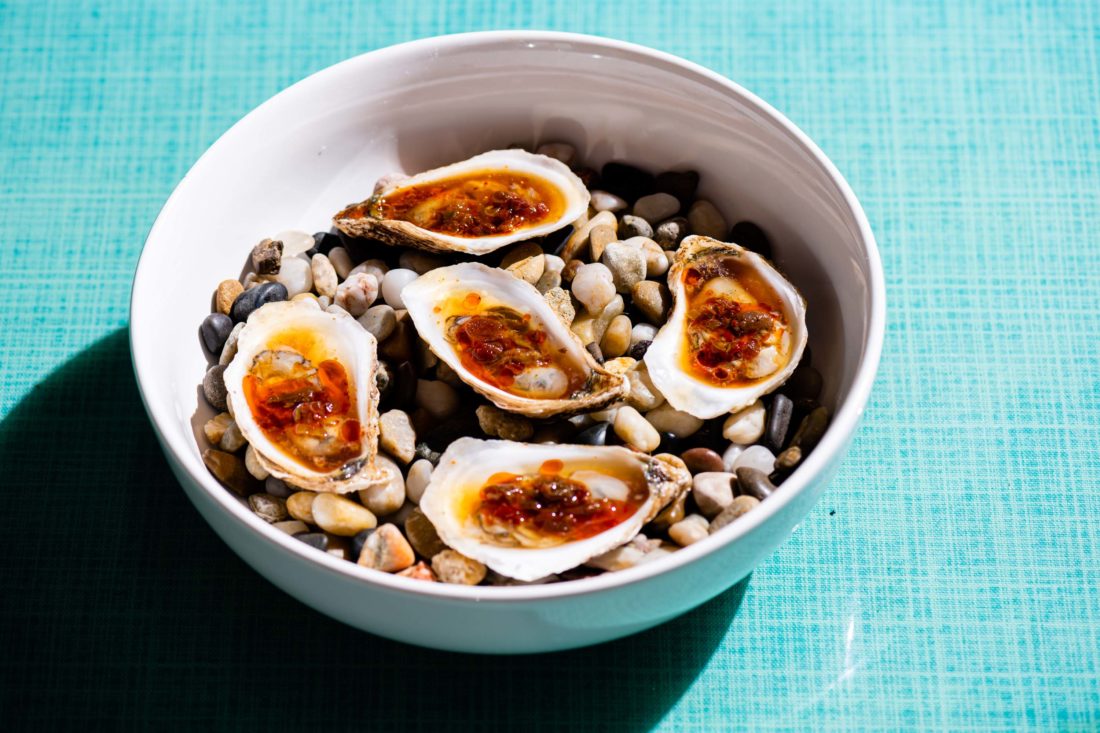
Photo: Courtesy of Setsun
Oysters and mignonette.
More than half the room usually orders the “A Bit of Everything” option, which arrives as a gently priced at $95 tasting progression for two. While most of the dishes change, you can count on the centerpiece being Zygmont’s signature ricotta agnolotti in a spicy slap of Calabrian chile salsa. “I think my girlfriend will break up with me if I ever take that dish off the menu,” he laughs.
Thamee
Washington, D.C.
Opened May 2019
thamee.com
It was a freezing cold day when Jocelyn Law-Yone and her daughter, Simone Jacobson, opened Toli Moli inside EatsPlace, an incubator for food stalls. They served falooda, only falooda—the cold, creamy layered dessert drink speckled with jellies and basil seeds that serves as a popular cooler in Law-Yone’s native Burma. They didn’t expect much business at the stall in wintertime Washington. But the line formed early and didn’t let up. So many people from around the world knew and craved a version of falooda. A pair of college students from Jordan came twice that day, saying they didn’t know when they’d be back in D.C.. “My mom couldn’t understand why everybody was going crazy over it,” Jacobson laughs. “To her it was nothing special—it was like a grilled cheese sandwich. My mom and I, we’re of two very different generations and cultures. But I totally got the excitement.”

Photo: Farrah Skeiky
Jocelyn Law-Yone and her daughter, Simone Jacobson.
That, in a nutshell, is the story of many of the most exciting restaurants in America. An immigrant parent brings the flavors and recipes from home, and their child sees how to outfit and present these dishes for all the hyphenated Americans of today’s dining generation. Add Thamee (“daughter” in Burmese) to that list.
For their first full-service restaurant, Law-Yone and Jacobson went into business with restaurateur Eric Wang to open this Burmese spot in D.C.’s fast-happening H Street Corridor. “There are twenty-eight seats in the dining room and an open bar area, so my mom and I can touch every table,” Jacobson says. Law-Yone, at the age of 67, is running her first restaurant and relishing her role as culinary ambassador. “What we’re trying to do is create a bridge,” Jacobson continues. “Our menu is very small and curated. I don’t want people to be turned away by their lack of knowledge about this food.”
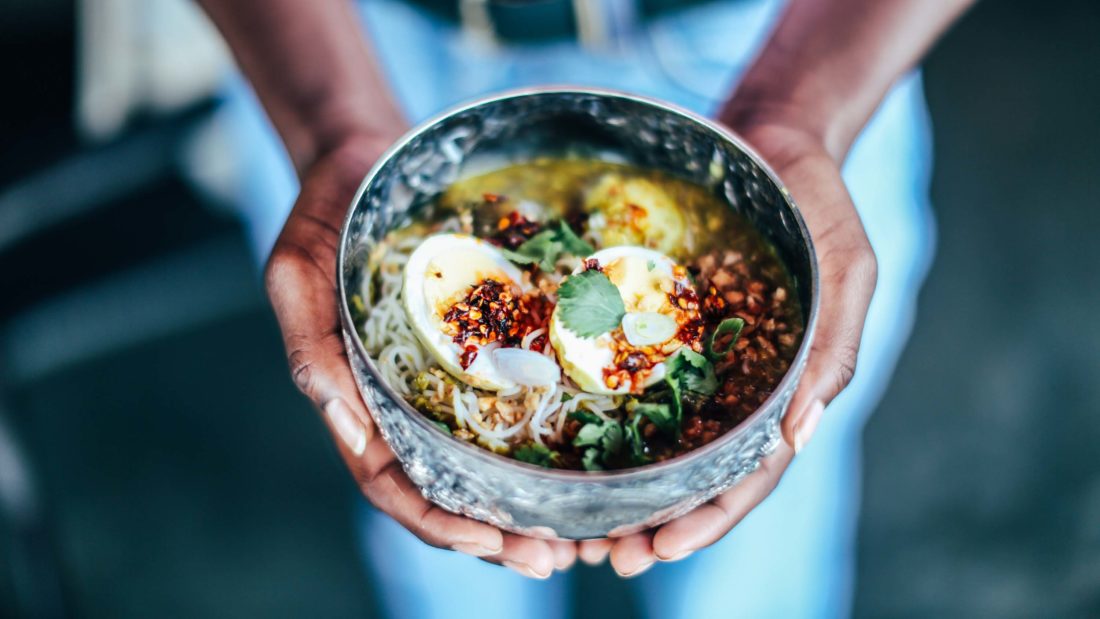
Photo: Farrah Skeiky
A bowl of mohinga, a catfish and noodle stew.
Burmese people, she says, “like a lot of everything—different colors, flavors, and textures in the same dish.” Typical of this approach is lahpet thoke, a salad of fermented tea leaves presented in a riot of cabbages, sesame seeds, crispy mung beans, tomatoes, and red onion. “Savory, sour, salty, crunchy, soft, bitter, you have everything in that one dish,” Jacobson says. Diners can also try mohinga, the catfish and noodle stew that typically shows up on the breakfast table in Burma. Those who dig into another noodle dish, ohno khauk swe, may recognize it as a cousin to northern Thai khao soi for its composition of coconut broth, shredded chicken, slippery noodles, chili oil, and a topping of crunchy lo mein. Jacobson, of course, says her mom makes the best. But at home the crispy topping can be anything that’s handy. “We usually just put crushed-up potato chips on top.”


